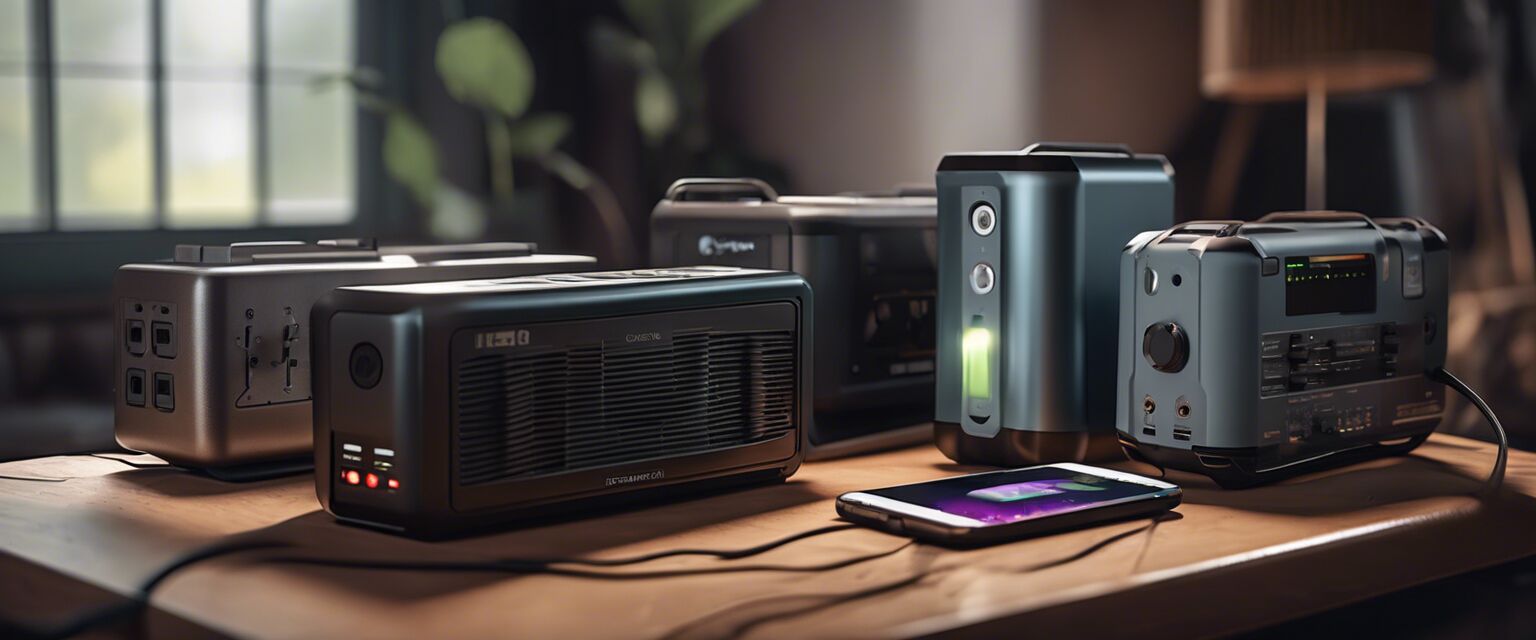
Portable Power For Emergency Situations
- Portable power stations provide reliable energy for emergency situations.
- Select the right capacity and features based on your needs.
- Understanding the types of devices you want to power is crucial.
- Regular maintenance and testing of your power station ensure reliability.
- Consider solar-compatible options for sustainable energy during emergencies.
When emergencies strikeâwhether it's a natural disaster or an unexpected power outageâhaving a reliable source of energy can make all the difference. Portable power stations are excellent tools for ensuring you're prepared, providing a source of backup power when you need it most. In this guide, we will explore how to choose the right portable power station for your emergency preparedness needs and offer tips on how to effectively use them.
Why are portable power stations important?
Portable power stations are compact, mobile battery systems designed to power devices and appliances without relying on a conventional power grid. As a solution for emergency situations, they offer several benefits:
- Provide power for essential devices such as smartphones, lights, and medical equipment.
- Offer flexibility in location; they can be used in homes, vehicles, or while outdoors.
- They can recharge using solar panels, making them environmentally friendly.
- Many models are easy to transport and set up, requiring minimal effort to get started.
What to consider when choosing a portable power station
Selecting the right portable power station involves evaluating your specific needs and usage scenarios. Here are the key factors to consider:
Battery capacity
The capacity of a power station is measured in watt-hours (Wh). The higher the watt-hour rating, the more power it can store and supply. Consider how much energy you will need:
| Device | Typical wattage | Hours of use (with a 500Wh power station) |
|---|---|---|
| Smartphone | 10W | 50 hours |
| Laptop | 60W | 8 hours |
| Refrigerator | 150W | 3â4 hours |
| LED Light | 10W | 50 hours |
Input options
Different portable power stations come with various ways to recharge, including AC wall outlets, car chargers, and solar panels. Choosing a model that fits your usage pattern is advisable. For example, for more sustainable energy options, consider solar-compatible stations.
Number of output ports
Look for devices with multiple outlets (AC, USB, DC) for versatility in powering several devices at once. A higher number of output ports can come in handy during emergencies when multiple devices need charging.
Weight and portability
Consider how portable you need the power station to be. If you plan to use it for camping trips or in different locations, choose a lightweight model that is easy to carry.
How to use portable power stations during emergencies
Proper usage can significantly enhance the effectiveness of your portable power station during emergencies. Follow these guidelines:
- Keep it charged: Regularly charge your portable power station so itâs always ready for use.
- Test it periodically: Check that all ports and functions are working as expected.
- Prioritize your devices: Determine which devices are most important during an emergency and prioritize their charging.
- Utilize solar charging: If your station supports solar energy, harness this feature to extend run time during prolonged blackouts.
- Follow the manual: Read the manufacturerâs guidelines for specifics on usage and safety.
Pros and Cons of portable power stations
Pros
- Convenient and easy to use.
- Suitable for various environments and use cases.
- Rechargeable using multiple methods (AC, car, solar).
- Help maintain essential devices during power interruptions.
Cons
- Limited battery life depends on capacity.
- Some models can be heavy.
- May require upfront investment.
- Not suitable for high-power appliances without proper capacity.
Regular maintenance and safety tips
To ensure your portable power station operates efficiently, follow these maintenance and safety tips:
- Store it in a cool, dry place.
- Inspect regularly for signs of damage or wear.
- Do not let it fully discharge before recharging.
- Follow guidelines for temperature and usage limits.
Conclusion
Portable power stations are essential tools for emergencies, providing peace of mind and reliable energy solutions. By understanding your needs and considering the capacity, type, and features of available stations, you can be well-prepared to handle unexpected situations. Take the time to explore various models and choose the one that best meets your requirements for emergency preparedness.
Further reading
Expand your knowledge on portable power solutions with our exclusive articles:
- Compact power stations
- Heavy-duty power stations
- Outdoor adventure stations
- Portable charging stations
- Travel-friendly stations












